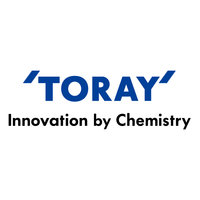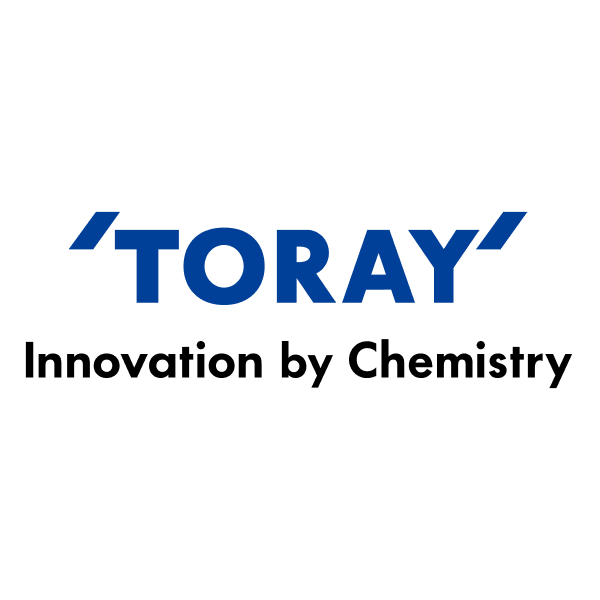
Toray Industries Inc
TSE:3402


Utilize notes to systematically review your investment decisions. By reflecting on past outcomes, you can discern effective strategies and identify those that underperformed. This continuous feedback loop enables you to adapt and refine your approach, optimizing for future success.
Each note serves as a learning point, offering insights into your decision-making processes. Over time, you'll accumulate a personalized database of knowledge, enhancing your ability to make informed decisions quickly and effectively.
With a comprehensive record of your investment history at your fingertips, you can compare current opportunities against past experiences. This not only bolsters your confidence but also ensures that each decision is grounded in a well-documented rationale.
Do you really want to delete this note?
This action cannot be undone.

| 52 Week Range |
635.2
962.2
|
| Price Target |
|
We'll email you a reminder when the closing price reaches JPY.
Choose the stock you wish to monitor with a price alert.
This alert will be permanently deleted.
 Toray Industries Inc
Toray Industries Inc


 You don't have any saved screeners yet
You don't have any saved screeners yet

Thank you very much for joining us today despite your busy schedule. On behalf of Toray Group, I would like to take this opportunity to extend my gratitude towards your continued understanding and your interest in our management and business activities.
Now I would like to report Toray's business results for the first quarter ended June 30, 2023, and the business forecast for the fiscal year ending March 2024.
Now I would like to follow the table of contents shown on Page 1. I would like to begin with an overview of business results for the first quarter ended June 30, 2023.
Please turn to Page 3. Consolidated revenue for the first quarter decreased 4.6% compared with the same period of year earlier to JPY 578.1 billion. Core operating income decreased 19.2% to JPY 21.9 billion and profit decreased 65.1% to JPY 13.9 billion. Special items for the first quarter worsened by JPY 24.9 billion to negative JPY 1.1 billion.
Page 4 is about assets, liabilities, equity and free cash flow. As for financial condition at the end of June 2023, both assets and liabilities were affected by the increase in translated yen amount of overseas subsidiaries because of the depreciation of the yen. Total assets stood at JPY 3,347.4 billion, up JPY 153.3 billion from the end of the previous fiscal year due primarily to increases in inventories, tangible fixed assets and other financial assets.
Total liabilities increased JPY 41.6 billion from the end of the previous fiscal year to JPY 1,599.8 billion, owing mainly to increases in borrowings. Total equity rose by JPY 111.8 billion compared with the end of the previous fiscal year to JPY 1,747.6 billion. Owner's equity was JPY 1,643.3 billion. Interest-bearing liabilities was JPY 974.7 billion and the D/E ratio was 0.59. Free cash flow was positive at JPY 12.5 billion.
Page 5 explains about the capital expenditures, depreciation and amortization and R&D expenditures. Capital expenditures for the first quarter increased by JPY 7.5 billion to JPY 23.5 billion on a year-to-year comparison. Meanwhile, depreciation and amortization decreased by JPY 0.1 billion to JPY 31.9 billion. R&D expenditures decreased by JPY 1.2 billion to JPY 15.5 billion compared with the same period of the previous fiscal year.
The table on Page 6 describes revenue and core operating income by segment. In addition, the graph on this page shows the factor analysis of JPY 5.2 billion decrease in core operating income for the current first quarter on a year-to-year comparison. The difference in quantity was minus JPY 6.6 billion due to a decrease in production and sales volumes, mainly in the Performance Chemicals segment.
The net change in price was a plus JPY 5.4 billion due to the falling raw material prices compared with the same period of the previous fiscal year. Cost variance and et cetera, was minus JPY 4.2 billion, mainly due to increase in fixed costs.
Using Page 7 and after, I would like to explain the results of each segment. First, Fibers & Textiles. Revenue of the overall segment decreased to 0.9% to JPY 223.8 billion compared with the same period a year earlier, and the core operating income increased 25.8% to JPY 10.9 billion. Both apparel applications and hygiene material applications were sluggish, respectively, due to worsening market conditions in the U.S. and Europe and the impact of the worsening supply-demand balance.
Industrial applications witnessed a demand recovery trend in automobile applications and there was improvement in the spread from the price decline of natural gas, et cetera, in Europe.
Page 8 is the Performance Chemicals segment. Revenue decreased 12.3% to JPY 214.8 billion compared with the same period a year earlier and core operating income decreased 56.1% to JPY 7.4 billion. I would like to explain the conditions of each business on the next page.
The Resins business was weak given the decline in demand in the Chinese market. The Chemicals business was affected by sluggish market conditions and the decrease in demand of caprolactam. Demand declined due to inventory adjustment in supply chains for optical applications and electronic parts in the films business as well as circuit materials in the electronic and information materials business.
Page 10 is the Carbon Fiber Composite Materials segment. Revenue increased 0.2% to JPY 68.7 billion compared with the same period a year earlier and segment posted core operating profit of JPY 2.7 billion, 13.8% increase from the same period a year earlier. I would like to explain the status of each application on the next page.
In the aerospace applications, the production rate of commercial aircraft at the major customers showed a recovery trend. The sports applications was low due to the full fledged inventory adjustment mainly in general purpose products for [ automobile ] measures. In the industrial applications, environmental, demand for special vessels expanded with the rise of environmental awareness, while in large tow, wind turbine blade application entered into an adjustment phase.
Page 12 in the Environment & Engineering segment, revenue increased 10.3% to JPY 56 billion compared with the same period a year earlier, and the core operating income increased 76.4% to JPY 6.2 billion. In the water treatment business, shipment to the U.S. and China, the 2 major markets for reverse osmosis membrane was strong. Further, sales of an engineering subsidiary and the construction subsidiary in Japan were also strong.
Page 13 is the Life Science segment. Revenue decreased 8.4% to JPY 11.3 billion compared with the same period a year earlier and core operating income decreased by JPY 0.6 billion to negative JPY 0.5 billion.
In the pharmaceutical business, sales of oral anti-pruritic drug REMITCH were affected by the introduction of its generic versions and the NHI drug price revision, and sales of orally active prostacyclin derivative DORNER were affected by inventory adjustment overseas. In the Medical Devices business, sales of dialyzers were affected by the soaring prices of raw materials and fuels.
Page 14 shows the business results for major subsidiaries and regions. At Toray International, sales of fibers and textiles, resins, chemicals and films decreased. And for subsidiaries in Southeast Asia in the Fibers & Textiles business, apparel applications were affected by the worsening market conditions in the U.S. and Europe.
In the Performance Chemicals business, ABS resins were impacted by demand decrease in China and ASEAN countries. And for subsidiaries in China, in the Fibers & Textiles business, apparel applications were partly affected by sluggish market conditions in the U.S. and Europe. However, sales in the Chinese domestic market was strong. Performance Chemicals business was affected by the demand decrease in resins products.
And for subsidiaries in the Republic of Korea, in the Fibers & Textiles business, although supply-demand balance of nonwoven fabric worsened, [indiscernible] and staple fibers improved. Performance Chemicals business was affected by the demand decrease in resins products. Electronic & Information Materials business was impacted by the decrease in production volume of LCD panels for TVs.
Next, I would like to explain the consolidated business forecast for the fiscal year ending March 2024.
Please turn to Page 16. The global economy is showing a gradual recovery, but the pace is expected to remain slow due to factors such as the inflation and higher interest rates in the U.S. and Europe, dampening consumer spending and capital investment.
In China, the process for normalization of economic conditions is likely to be moderate given the slowdown in demand outside of China on the sluggish real estate market. The Japanese economy is also expected to show gradual recovery. However, continued monetary tightening in the U.S. and Europe to tackle the sustained inflation is considered to be a downward risk for the global economy.
For the fiscal year ending March 31, 2024, Toray revised its full year consolidated forecast announced on May 12, 2023, taking into consideration its business performance for the first 3 months of the fiscal year and the changes of business environment. It now expects revenue of JPY 2,560 billion. Core operating income of JPY 120 billion and profit of JPY 76 billion remains unchanged. This forecast from July onwards is based on an assumed foreign currency exchange rate of JPY 135 to the U.S. dollar.
Page 17 shows the consolidated business forecast for the fiscal year ending March 2024 by segment.
Page 18 shows the comparison of core operating income between the initial forecast and the new forecast with breakdowns into segments. The factors behind the differences are shown on the right side of the table. This concludes my presentation. Thank you very much.
[Statements in English on this transcript were spoken by an interpreter present on the live call.]